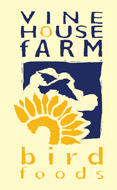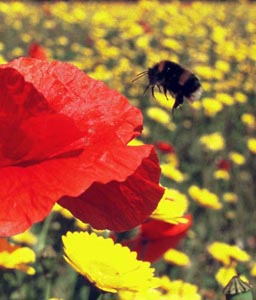
 |
This page is made possible by the kind sponsorship of Vine House Farm bird foods | |||||||
|
• Trees, large shrubs and tall bushy hedgerows near bat roosts enablre the bats to emerge earlier and hunt for insects active at dusk.
• Choose garden plants that are native to Britain benefits most insects, including bumble bees and butterflies. Flower rich, lightly mown meadows are more insect friendly than close cut lawns.
• Planting native plants, especially in rural gardens, will not endanger native wild plants by hybridising. We have all seen the consequences of planting pink primulas near wild primroses – a rash of guady pink among swathes of yellow. Also Spanish bluebell is now a real threat to our native variety.
• Plants without double flowers are better for bees that need pollen to feed to their larvae. The reason is that pollen bearing anthers are replaced with petals in double flowered blooms. It is important as bees will pollinate your crops and wasps eat unwelcome caterpillars.
• Trim bushes and hedgerows only in winter, after all the wild flowers and fruit has been used by wild creatures.
• Garden ponds are vital for newts, frogs and toads as well as dragonflies and damselflies.
• Last but not least – pesticides and herbicides kill friendly species as well as foes. The less chemicals are used in the garden the better for wildlife. The balance of nature is easily upset, a healthy garden is good for wildlife and people.
